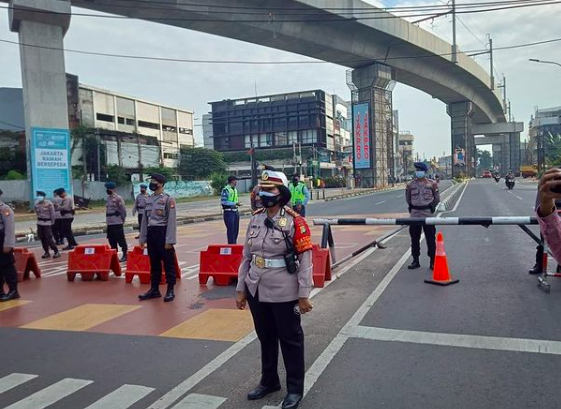On paper, the Emergency Enforcement of Restrictions on Public Activities (Emergency PPKM) from July 3-20 was the closest thing Indonesia had to a lockdown. In practice, however, enforcement was weak as cases continued to rise. Now that we have entered a new tier-based PPKM that will last until at least July 25, has anything changed beyond the nomenclature of the policy?
Not really.
President Joko Widodo yesterday announced that the Emergency PPKM protocol is being replaced with Levels 1-4 PPKM. In a set of Ministerial Instructions by the Home Affairs Ministry published yesterday outlining PPKM in Java and Bali, the two highest levels contain identical restrictions to those in Emergency PPKM.
Levels 3 and 4 PPKM, which are being enforced in Jakarta, most major cities and regencies in Java, as well as Bali, still require all employees in non-essential to work from home, while malls still have to shut and restaurants can only serve take away and delivery orders, among other restrictions.
The Home Affairs Ministry has not outlined restrictions for Levels 1 and 2 PPKM, but we probably shouldn’t get ahead of ourselves yet.
Regions outside of Java and Bali are operating under another set of rules, which contain looser restrictions for each level of PPKM relative to those enforced on the two densely populated islands.
In yesterday’s address, the president all but promised to gradually relax restrictions should the regions’ caseloads significantly decrease (without offering specific parameters as to what amount of decrease is acceptable) by the time the protocol is up for evaluation for possible extension on July 26 and beyond.
Based on previous regulations, however, a region is categorized as Level 4 if it has 100 cases per 150 thousand people, or 30 hospitalizations per 100 thousand people, or five deaths per 100 thousand people. For Level 3, the numbers must go down to 50 cases, 10-30 hospitalizations, and 2-5 deaths, respectively. Further decreases in each category are required to reach Levels 1 and 2.
Indonesia’s daily caseload has gradually decreased over the past few days, but with a huge caveat being that the number of tests have dropped significantly, too. It remains to be seen if the government’s relaxation of restrictions would take decreased testing numbers into account.
Indonesia recorded 38,325 new cases yesterday, which is significantly lower than the July 15 record of 56,757, though the positive rate of tests remained constant amid fewer tests yesterday. The country also recorded 1,208 deaths yesterday, which is sadly still close to the all-time high of 1,338 recorded the day before.




